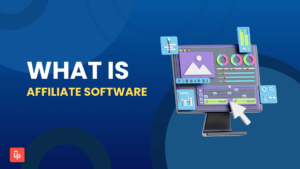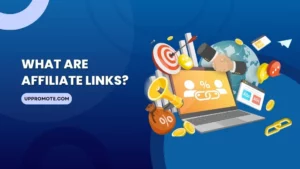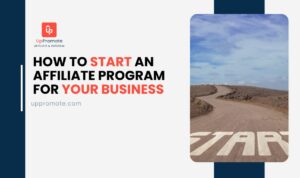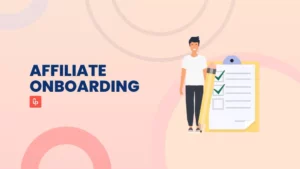Been worrying about how to do affiliate marketing without followers?
It is common sense that one must already have followers to initiate marketing efforts. Especially in the affiliate marketing industry, where you rely heavily on traffic to generate sales and make money.
In fact, not all successful affiliate marketers begin their journey with mass numbers of followers. So rest assured that you can still succeed with limited initial resources.
This article provides all you need to know about pursuing affiliate marketing with no followers. As you follow these tactics and advice, you will start gaining audiences and eventually buying customers.
What is Affiliate Marketing & How It Works?
Affiliate marketing is a commission-based marketing model. You, the publisher, promote affiliate products on behalf of other brands and get a share of the revenue.
These affiliate commissions are paid for each purchase generated from your unique tracking links. In some cases, it can simply be an ad click or service subscription that counts as a successful sale.
It is a mutually beneficial partnership between merchants and affiliate marketers. Businesses gain more customers, and you earn affiliate income without creating your own goods.
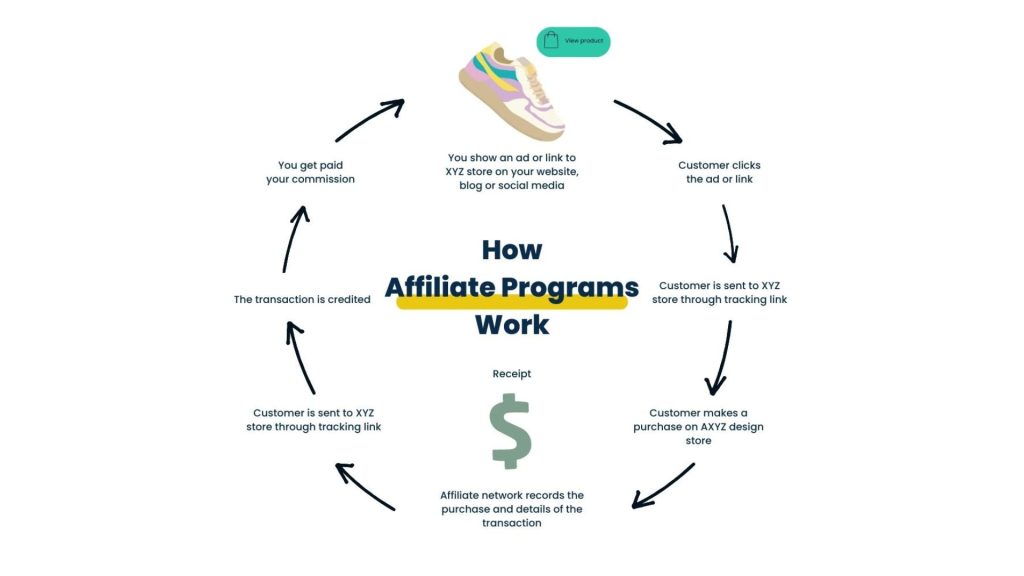
Here is how affiliate marketing works for beginners:
There are 3 parties involved in the process, including the merchant, the affiliate, and the customer.
As an affiliate of a company, you advertise its products on multiple platforms with an assigned affiliate link. When buyers click the link and purchase (or subscribe), the merchant pays you a commission fee.
You can find individual affiliate programs relevant to your niche or join trusted affiliate marketing networks. They will automatically assign tracking URLs and help you track your performance.
As you can see, making money with affiliate marketing is not difficult. Its performance-based nature means the better you promote affiliate products, the more commissions you earn.
How to Do Affiliate Marketing Without Followers – 5 Options To Choose!
Content Marketing
The ideal way to start affiliate marketing with no followers (and in most other cases) is to invest in your website content. Potential buyers view your site before being redirected to the product page, so this is where you need to pique their interest.
So, the very first step is to put extra affiliate marketing efforts into producing high-quality content.
Writing commercial posts is easy, but they will not make a long-lasting impact like informative or educational content. Let your audience know you can help solve their problems just by reading your articles.
Also, ensure your writing is relevant to your chosen niche. For example, an article about daily fitness routines may not attract your tech-savvy leads.
Here are some affiliate content ideas to consider:
- product review
- product recommendation
- product comparison
- best product round-up
- how-to articles
Besides the traditional content form of blog posts, you can also try making videos for affiliate promotion. Video content, such as on TikTok, has been popular recently due to the engaging visuals and concise information in less than a minute.
Remember to insert links to products into your content when possible. Of course, you should do this delicately to avoid unnecessary spamming.
All in all, the core purpose of content marketing is to establish yourself as an authority figure in your niche. When organic traffic sources visit your site and find reliable content, they will likely click the affiliate URLs and make a purchase.
As you represent the brand (and the product), people would love to learn more about them from your personal viewpoints. The less salesy your content appears, the more they trust that your reviews are genuine.
And what is better than earning the trust of your prospective buyers? Audiences will come to read your product recommendations and buy from your sources.
Search Engine Optimization (SEO)
In accordance with content marketing, do not forget an essential factor – applying search engine optimization (SEO) to your articles. Utilizing SEO is an easy way to make sales without followers because leads come from search engines.
This practice makes your content more accessible by increasing the website’s online visibility on search results. A high rank on Google means more people will see your blog posts and potentially purchase via your affiliate links.
Your job is to find the right keywords to attract users interested in the promoted items. When users look for things related to these keywords, your page gets a chance to rank higher in search results.
So, how can a newbie in affiliate marketing know which keyword to add to their content?
If you plan to conduct keyword research manually, search Google for relevant terms in your niche (e.g., indoor exercises). The results will pop up the most popular queries and articles related to that topic, including the most searched keywords.
Get to know these common types of keywords for your next blog posts:
- short-tailed keywords (e.g., indoor exercises)
- long-tailed keywords (e.g., indoor exercises for teenagers)
- questions (e.g., what indoor exercise can improve teenage height)
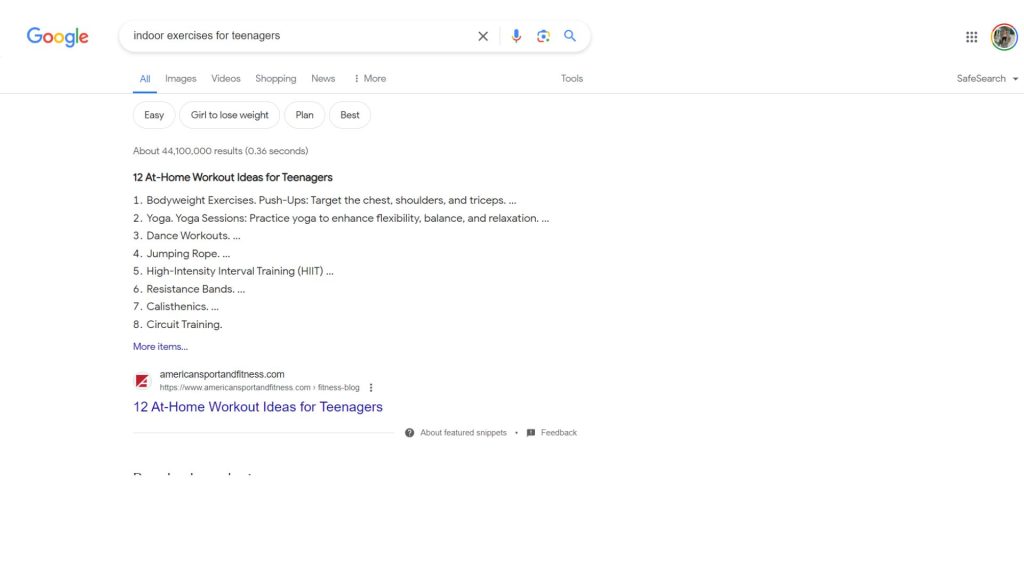
Short-tailed covers broad themes and mainly serves quick searches. However, its audience often browses through many pages for consultation without planning to buy anything.
In contrast, those using long-tailed keywords and questions are more intentional with their searches. Thus, these users will likely purchase from your recommendations.
For instance, you can write an article on indoor exercises that benefit teenagers’ well-being and apply suitable keywords. At the same time, add affiliate links to the home workout equipment you are promoting to the content.
Email Marketing
You can consider the email marketing strategy as the next step from content marketing and SEO. With this approach, you invite prospective leads to grab the affiliate offer and
Email marketing is often used in the middle and the end of a customer journey.
Sending emails to leads who have not taken action is a tactic to subtly urge them. While post-purchase email campaigns work to nurture their experience for return purchases.
But first, you must have a mailing list to learn how to do affiliate marketing without followers using email. One way to get email addresses from interested users is to promote newsletter sign-up boxes within your website.
Insert such boxes where suitable throughout your blog posts to compel audiences to register. Again, keep the volume neat to avoid irritating readers with repeated offers.
Or you can build a separate landing page with an opt-in form. Mention the link to this specific page in your content from other channels (e.g., Twitter, Facebook) to drive traffic.
Once you have an email list of potential buyers, regularly pitch them about your affiliate product benefits. Use different content (top best, comparison, etc.) for A/B testing to conclude the most effective approach.
What should you include in your affiliate emails, though?
- timely deals
- discount codes
- clear call-to-actions (CTAs)
Keep in mind that people will not hand you their personal information for nothing. Therefore, it is necessary to offer them something helpful in return.
You can hand out valuable incentives relevant to your niche, such as free guides, promo codes, ebooks, etc. Receiving useful tips to preserve wooden floors will increase the lead’s chance of buying your floor-care products.
In conclusion, no need to have a ready number of social media followers for this method. Incentivize users to get their email addresses and send regular email sequences to motivate them to purchase.
Online Communities and Forums
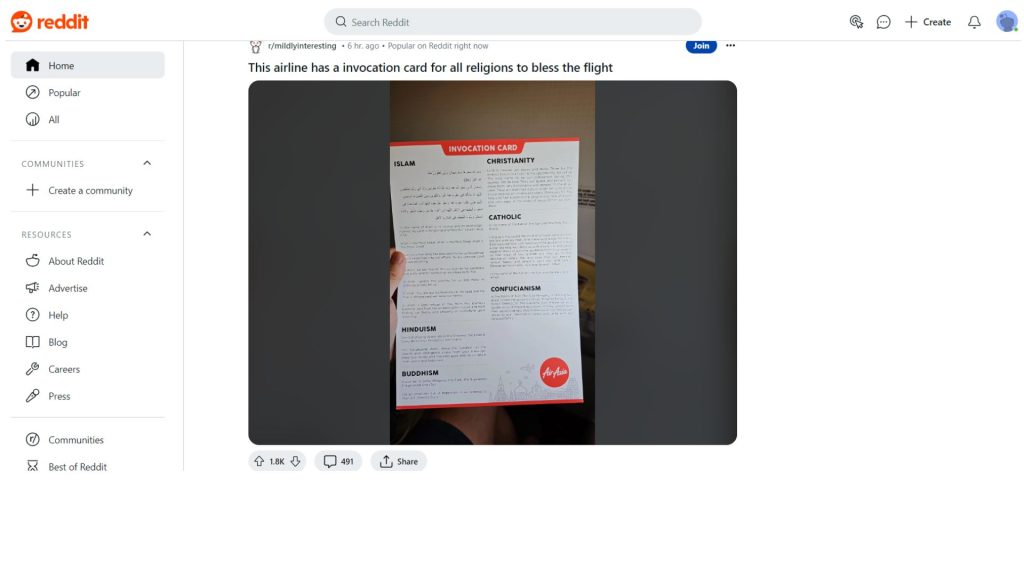
Even without social media followers, you can still take advantage of online communities for affiliate promotion. Reddit and Quora are major online forums covering literally any subject around the world.
Since they are question-based platforms, you will find evergreen content that pops up whenever someone new searches for that topic. One question can initiate endless discussions, and it is a fantastic opportunity to promote your affiliate product.
For example, assuming you are a kitchenware affiliate. You can find cooking forums or topics to market relevant products to interested users.
Medium is also a brilliant choice for those wanting to do blogging in a like-minded community. Many publishers choose this online publishing platform to educate readers and promote affiliate offers.
The best part about this site is its numerous publications in various niches. These can expose your posts to x10 or x100 times more people than your organic readers.
Remember always to disclose your affiliate activities in the content, and you are good to go.
As an affiliate marketer engaging in online forums, you should find trusted publishers in your niche and learn from their steps. Check out what they usually write about and their audiences’ opinions in the comment section.
You can ask these professionals what you want to know more about the niche or discuss it with others via comments. When possible, mention your affiliate goods as a friendly suggestion for those in need.
Based on these interactions, you build relationships and increase your online visibility. It helps drive traffic to your profile, where people discover fascinating content that brings them value.
At the same time, actively interact with online users by responding to their comments and giving helpful advice. When you establish yourself as an industry expert, you naturally gain followers who trust you to purchase your offers.
Paid Advertising (Optional)
Being an affiliate marketing beginner can be challenging at first. You do not always get consistent organic traffic to meet personal affiliate marketing goals.
Therefore, paying for advertisements to reach more potential customers is a viable option.
Imagine this. Attracting organic traffic is like throwing a random bait into the ocean and waiting for some fish to get caught. You do not know what to expect, and the results may not match your requirements.
If you want to catch a particular species—the target audience likely to purchase—paid ads can reach them.
There are many online platforms where you can utilize ads to target prospective buyers. Google Ads, Facebook Ads, and other social media advertising are popular methods to boost your media.
The system offers various demographic features when selecting your ad audience.
For instance, advertisers can choose the gender, age, geolocation, etc., of the people they want to target. These specific demographics ensure your ad viewers are interested in your niche and affiliate offers.
Driving targeted traffic directly to your landing pages with affiliate links potentially leads to faster results. Consequently, it enables higher conversion rates in how to do affiliate marketing without followers.
Note that you should establish traffic campaigns while running paid ads. It collects data from relevant sources to show you insights and reports on traffic-related matters.
The following types of digital ads are popular and effective in driving traffic:
- Display ads: The most basic forms usually appear as banners, pop-ups, flash blog ads, etc.
- Native ads: Sponsored listing based on user history, appear as “People also bought…” or “Items similar to…” etc.
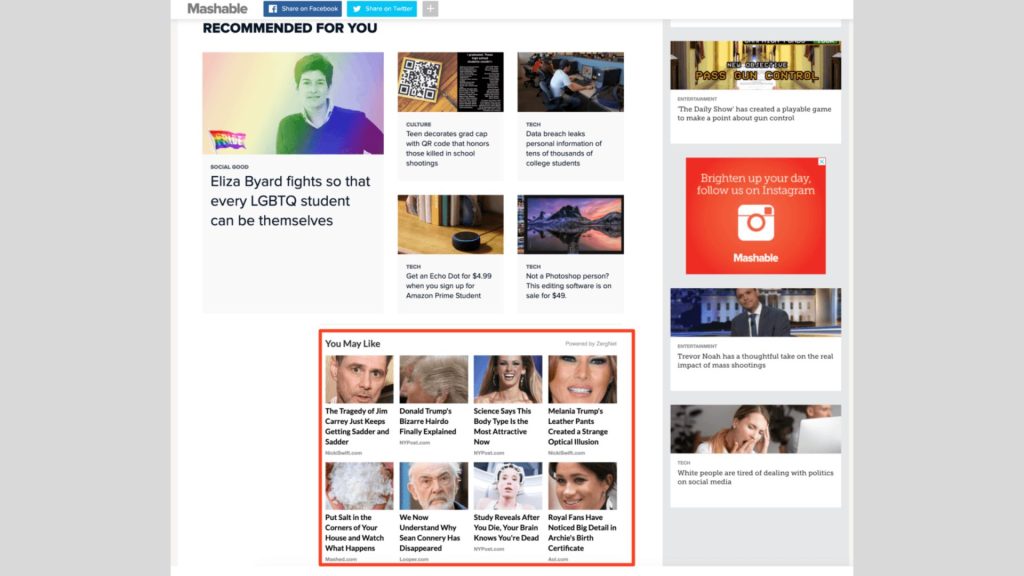
- Social media ads: Basically native ads on platforms like Facebook, YouTube, Instagram, etc.
- Search engine marketing (SEM): Based on frequently searched keywords using SEO on Google and Bing.
- Video ads: Similar to display and native ads but in the video format.
Lastly, you must always consider your budget for this approach. If you are new and do not know how much to spend on ads, start with a low amount for A/B testing first.
Pros And Cons Of Social Media Affiliate Marketing
| Advantages | Downsides |
| Simple entry barriers | Questionable trust (especially without followers) |
| Ready-to-use tools and resources | Personal responsibility |
| Low investments | High competition level |
In terms of how to do affiliate marketing without followers, you should consider the pros and cons of running this model on social media platforms.
The most obvious advantage of social channels like Facebook or Twitter is free access. This means anyone can kick off their affiliate partnership journey on these platforms.
There are only a few policies to keep in mind. For example, links on Instagram text posts are inaccessible, and some others require you to disclose affiliate acts to your audience.
The available resources on social media are extremely helpful, too. You can upload various media types (text, photos, videos, GIFs, etc.) and use built-in tools to schedule posting or run paid ads.
These features will help you diversify your profile and attract potential customers. The more creative you get with your content, the more appealing it is to interested users.
Since a social media user has everything in hand, it does not cost much money initially. Basically, it requires you to put time and effort into it first before investing a huge budget.
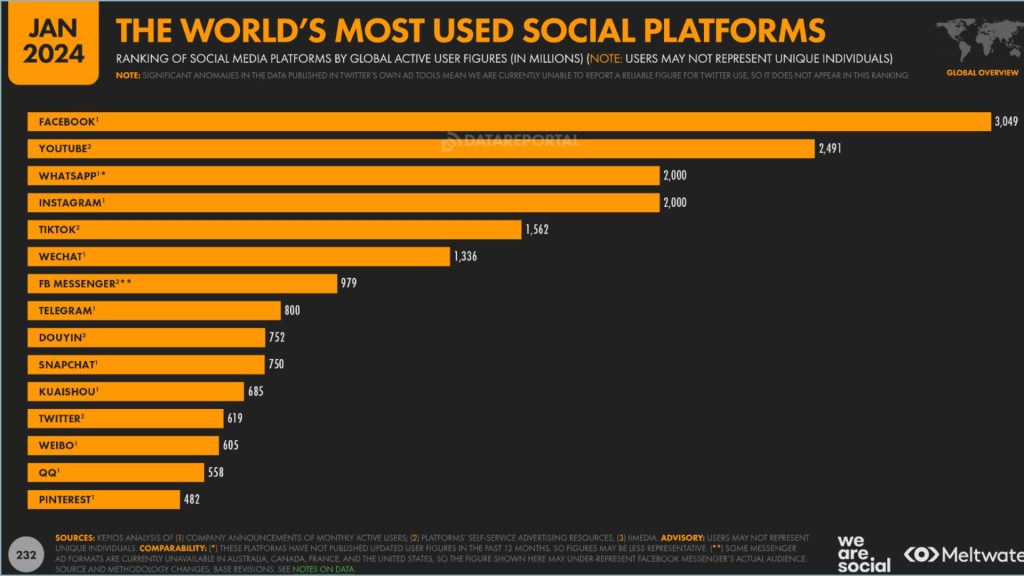
Nonetheless, publishers also run into several problems when doing affiliate marketing on social media.
People visit your profile and see only a few audiences. This makes them question your credibility with these product recommendations, as you are clearly trying to sell them.
Moreover, sometimes buyers may encounter product issues from the company itself. But because they bought it via your suggestion, the affiliate’s reputation might be jeopardized.
These customers will likely initiate negative word-of-mouth marketing, causing your channel to lose the trust of potential leads.
Lastly, the simple entry barriers can become a double-edged sword. When everyone has access to social media and affiliate marketing, it results in shockingly high competition.
Choosing the Right Affiliate Programs When You Have No Follower
Not sure how to do affiliate marketing without followers and select a suitable affiliate program?
Believe us – you are not alone. Most newbies in this industry are confused among thousands of programs to work with.
Here are easy steps for you to find and join beginner-friendly affiliate programs:
Choose a niche to decide what type of products you will promote. Then, head to Google and search for relevant affiliate programs by typing “[your niche] + affiliate program.”
The top search results will give you suggestions on which program to join. From there, you can review its features, terms and conditions, etc., to see whether it fits your needs.
And those are only individual programs you actively seek on search engines or via references.
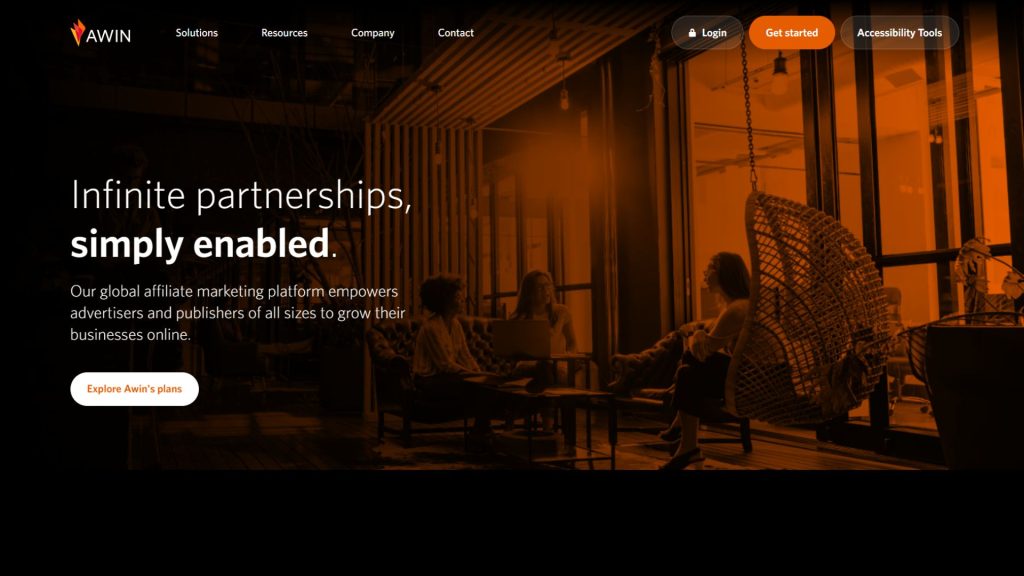
Affiliate networks like Rakuten, CJ Affiliate, UpPromote, Awin, etc., are also reliable addresses for finding similar programs.
These networks consist of programs in thousands of different niches. You are allowed to join multiple programs at once as long as you maintain consistency in your promotional content.
So, which criteria should you rely on to choose an affiliate program?
- Offers products relevant to your niche and content strategy. For example, a lifestyle blogger will easily promote minimal furniture.
- Provide high-quality creatives for promotion, such as ready-to-use banners and product descriptions. This will save you a lot of time producing your own marketing media.
- Transparent commission structures and reliable payouts. Check if it offers a fixed rate or tiered commission and when the program pays after a successful sale (e.g., at the end of every month or within 24 hours).
Make sure you choose programs accessible to new affiliates rather than high-paying options.
Furthermore, always check if the program requires partners to have social media followers. Some even ask you to have minimum traffic thresholds to be qualified.
Building Trust and Credibility As An Affiliate
As mentioned earlier, your credibility with your audience is essential in how to do affiliate marketing without followers.
People who believe in your words will likely purchase based on your recommendations. And that is when you successfully generate sales and earn commissions from brands.
However, your current weakness is not having many followers. Online users’ common sense is not to trust profiles with only a few audiences since they look suspicious and unreliable.
What can newbies do to improve that, of course, besides trying to get more followers?
Provide genuine content
High-quality content is the most important way to attract traffic to your page. This involves providing genuine product recommendations that bring value to your readers.
Your recommendations must come from research and actual experience (if possible). Promoting products you use is definitely more trustworthy and sounds less salesy than those you have not.
When prospective leads see that you can solve their pain points, they are more compelled to buy.
Transparent affiliate disclosure
Always remember to disclose affiliate relationships when promoting relevant affiliate offers.
This is to adhere to Federal Trade Commission (FTC) regulations on consumer protection from fraudulent marketing practices.
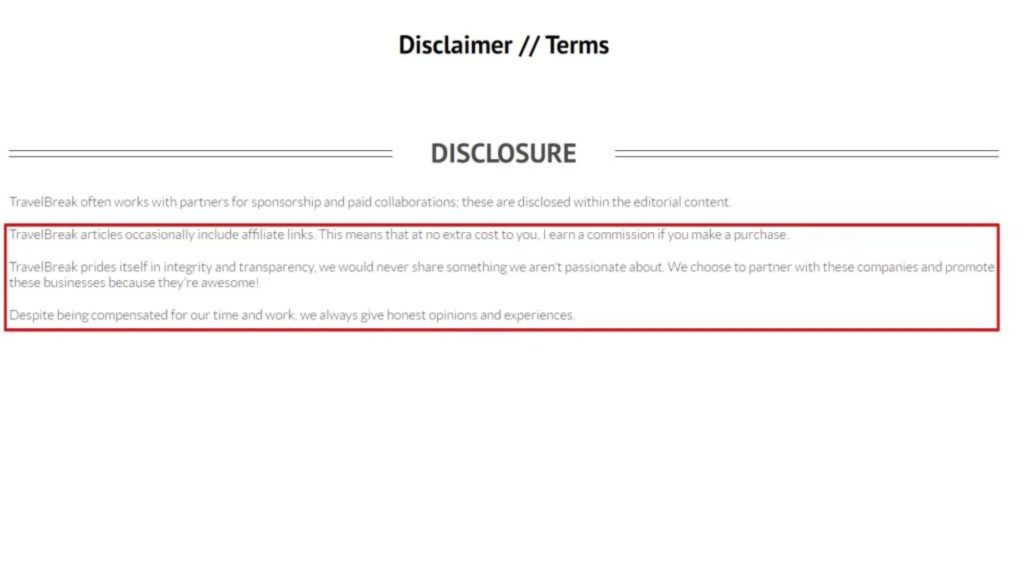
You can place the disclosure anywhere suitable within your content. It helps inform readers that you represent another business and earn money for each successful purchase.
Build relationships with audiences
The most crucial step in building trust as an affiliate is forming solid relationships with your audience. In addition to producing valuable content, you should also actively engage with them.
Regular online interactions show that you care about your customers’ opinions. Reply to their comments on social media and answer their queries via email as soon as possible.
All in all, make sure you retain their interest even after the sale. This encourages existing customers to refer their friends and family to your site.
Tracking and Analyzing Affiliate Performance Results
Last but not least, how to do affiliate marketing without followers require you to make the necessary adjustments. How do you know which aspect needs improvement and when they require it?
Many affiliate marketing programs offer in-depth reports and analytics for publishers. These measurements are visible on the affiliate dashboard.
No need to pay for third-party software to keep track of and analyze your performance.
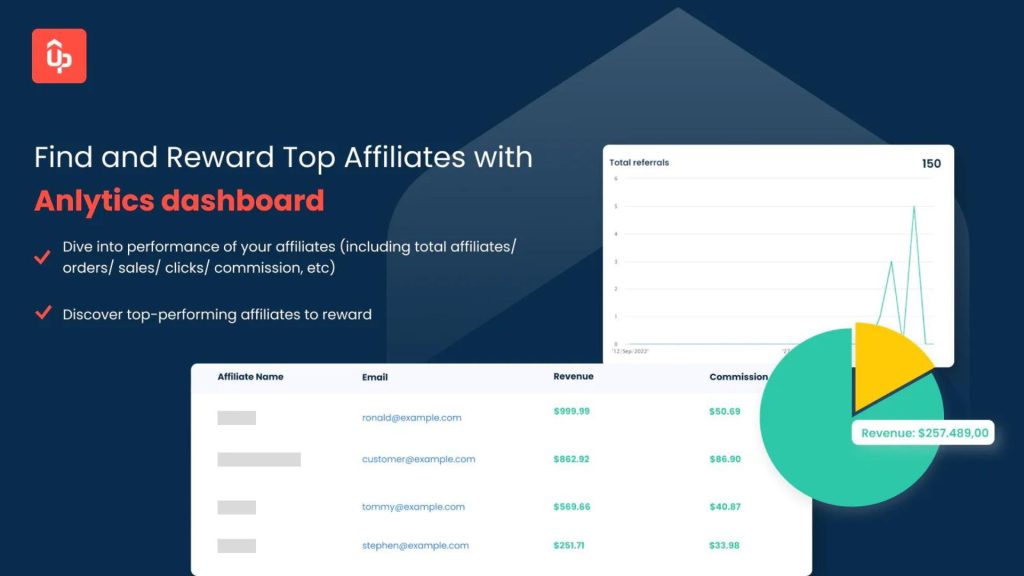
Focus on the following indicators to assess how you perform:
- Traffic sources: Monitor where your website visitors come from to boost marketing efforts in those channels.
- Click-through rate (CTR): Shows the effectiveness of your affiliate content in compelling visitors to click on the link.
- Conversion rate: Measures the percentage of audiences taking the desired action after interacting with your offer, whether subscribing to a service or purchasing something.
- User engagement: Tracks the level of involvement your audience has with your affiliate content, ads, and links.
These integrated tools in affiliate programs help you understand how effectively your marketing efforts convert. If people usually stop their customer journey before purchasing your product, the statistics speak up for you to address the issue.
Subsequently, it increases affiliate sales and boosts your income. The tracking tools also monitor your commission earnings to see how much you have made.
Joining affiliate programs and promoting their goods is one thing. But you must analyze your results to identify what is working and what is not.
Then, adjust your marketing strategy for continuous improvement. That way, you will constantly thrive to create better personal branding and generate more sales.
FAQs
- Can affiliate marketing work without followers?
Yes, you can do affiliate marketing without social media followers.
SEO-optimized content on your website can attract organic (or paid) traffic from search engines like Google. Potential buyers will visit your page and see the affiliate offer.
Other methods include sending email marketing campaigns and joining online communities and forums.
- How do I start affiliate marketing with no money or followers?
It is possible to earn money through affiliate marketing without followers or a considerable budget. Here is how you start:
Choose marketing channels (social media, blogs, online forums, etc.)
Select a niche
Join a relevant affiliate program with products in that niche
Produce compelling content
Regularly engage with audiences
- Can I become an Amazon affiliate without followers?
Yes, you do not need to have social media followers to become an Amazon affiliate.
The Amazon Associate affiliate program allows everyone to sign up for free without a number of followers.
The only requirement for this program is to have a blog or website to promote Amazon goods.
- How many followers do you need to be an affiliate marketer?
Affiliate marketing does not require publishers to have a specific number of followers. However, having around 5,000 to 15,000 followers on social media is more advantageous.
In fact, most affiliate programs do not focus on your follower numbers. They prefer partners to have a decent blog or website.
Conclusion
As you can see, it is totally possible how to do affiliate marketing without followers.
There are various approaches to begin with, such as content marketing, SEO, paid ads, etc. They work effectively to help you set a foundation to drive traffic and eventually gain audiences.
Other factors to consider involve choosing a beginner-friendly affiliate program, building trust as an affiliate, and tracking and analyzing your performance. All of these, combined with each other, will optimize your marketing efforts to achieve the best results.
Not having followers is not a setback. Take it as an opportunity to prove what you can do.




